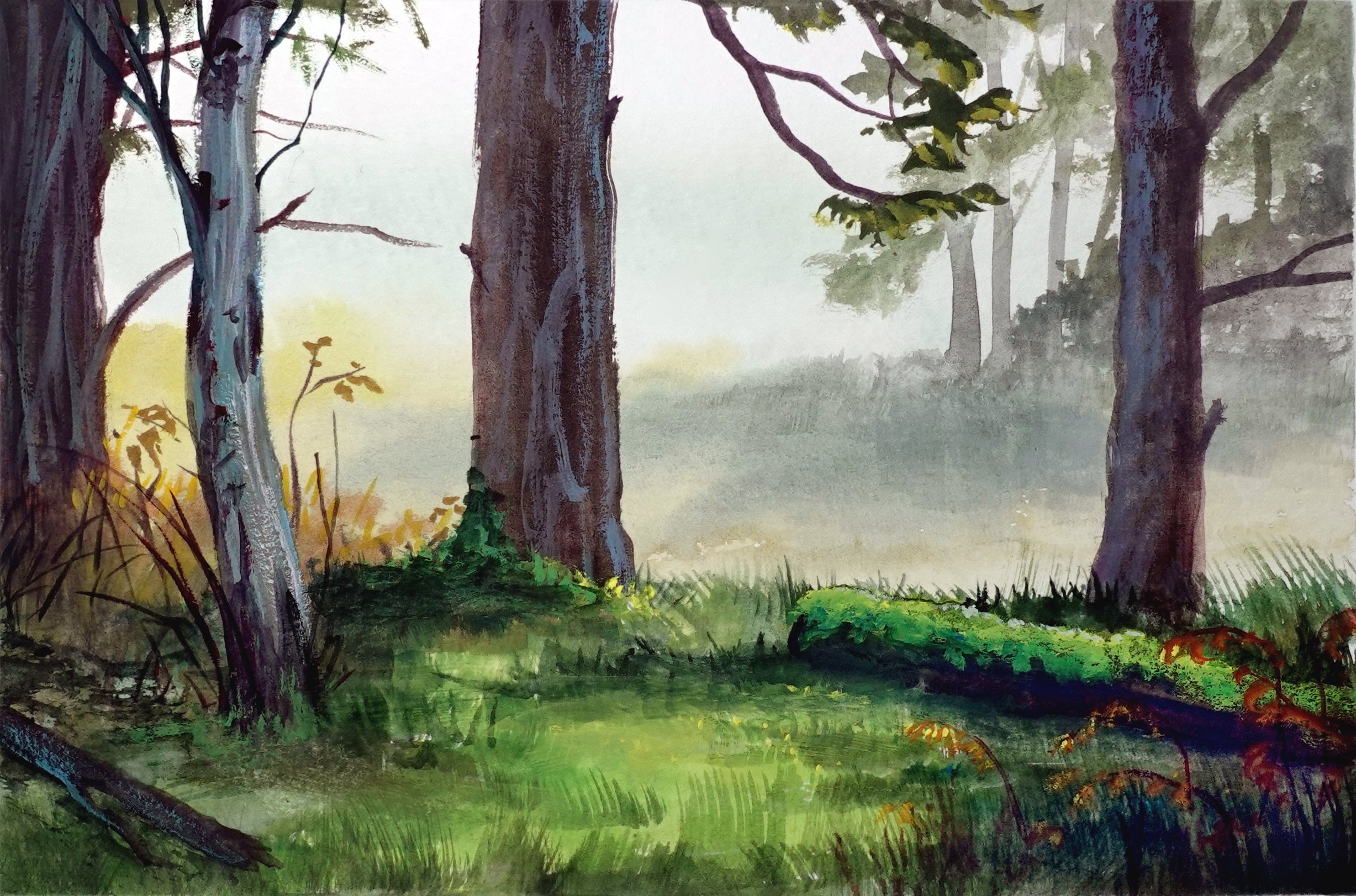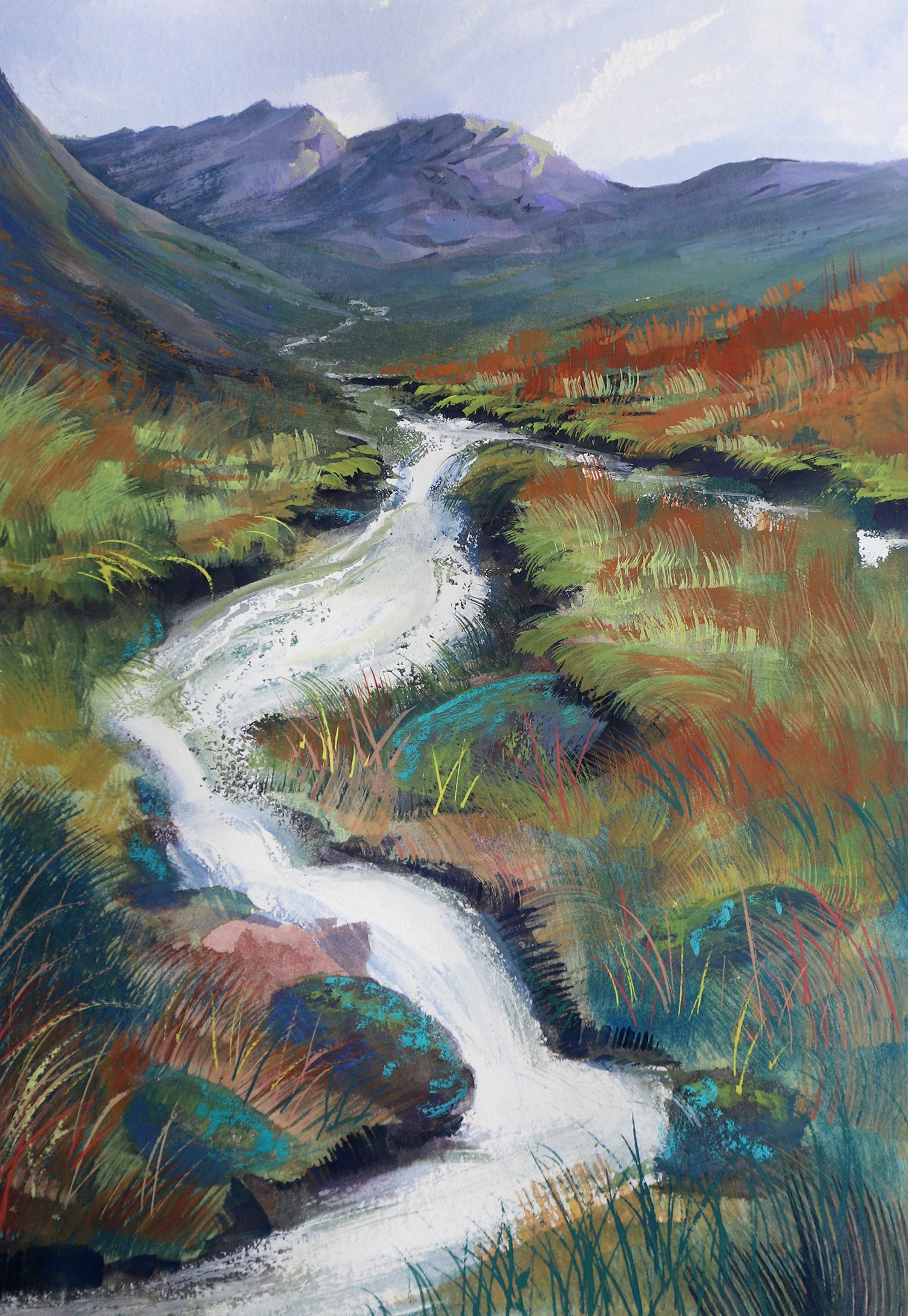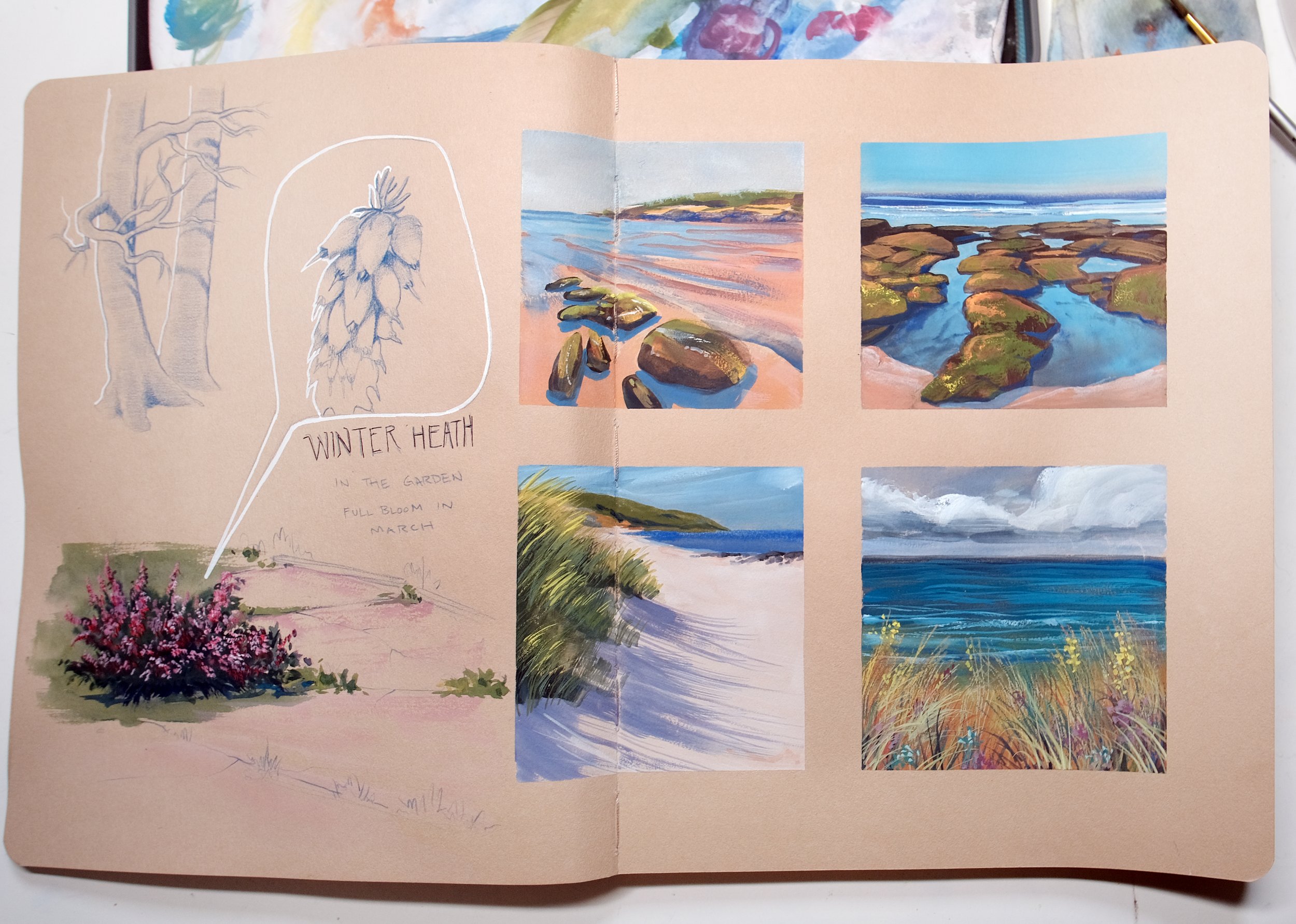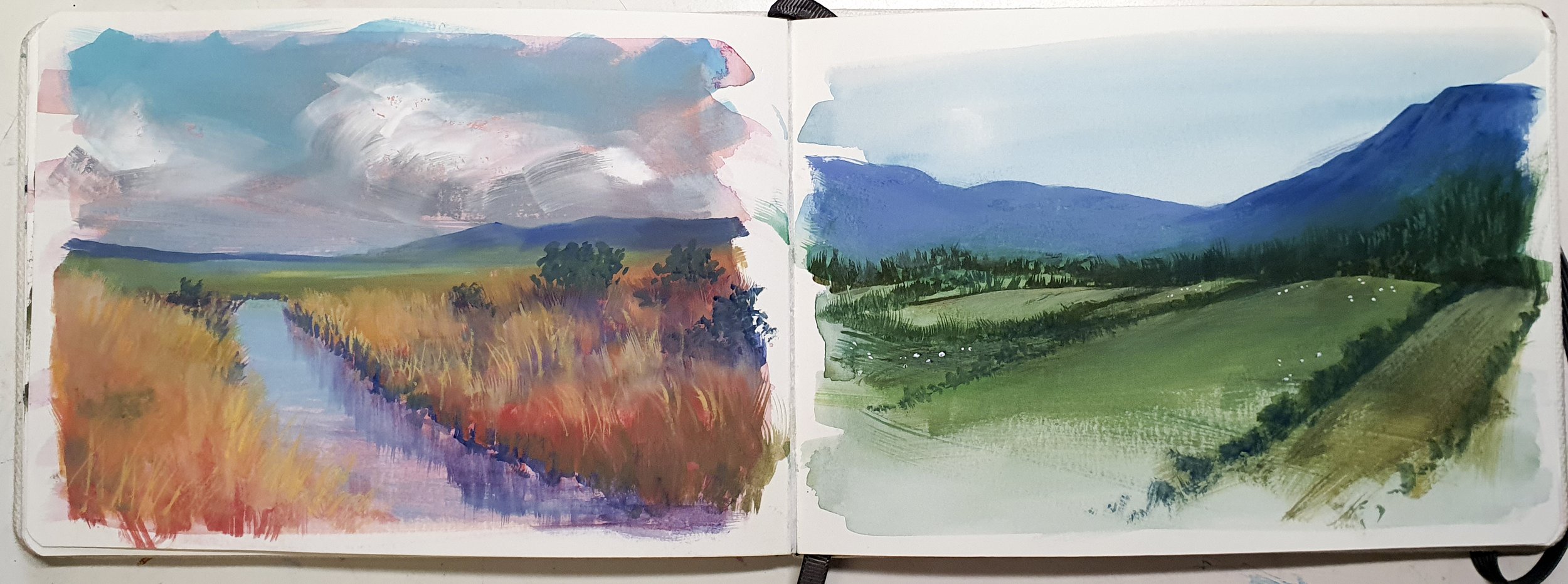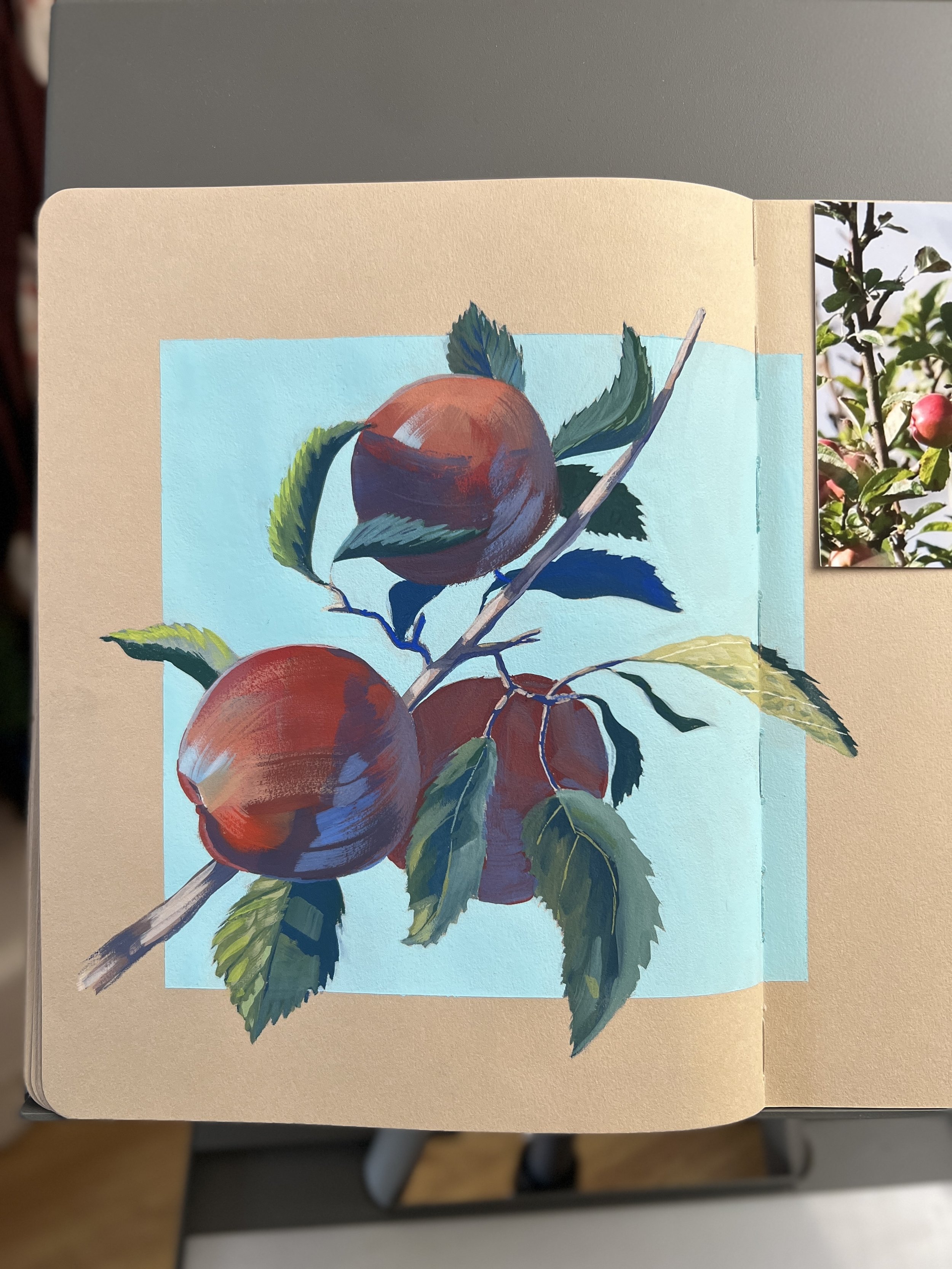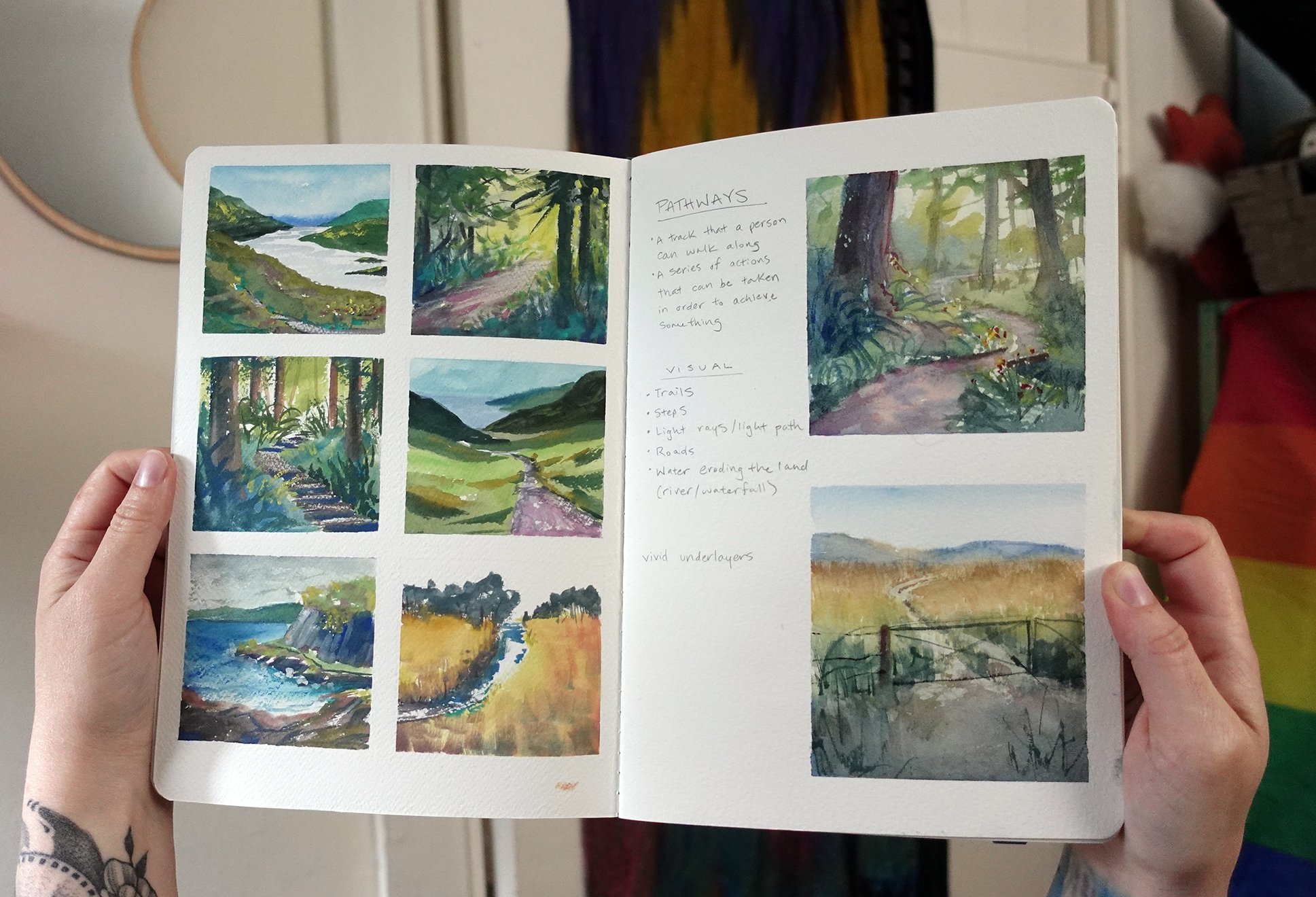184. How I Use Gouache - And Why I Love It
I’ve been meaning to make this post for a while…like years. Apparently “gouache” is the number one search term on my website.
Firstly, it’s not the only thing I use, nor my favorite medium.
If I had to rank my favorites it would look like this:
Drawing
Watercolor (for ease of use)
Gouache
Acrylic
Oil
Digital
But 2 & 3 are VERY close, almost tied. The reason watercolor wins is because it’s just plain easy. Especially for plein air and traveling.
What makes gouache extra special?
A few things stand out to me.
The vivid matte color is mesmerizing. The way it layers and blends but also allows for a HUGE variety of textures is astonishing. It’s kind of the “all in one” medium. You can use it like watercolor or like acrylic.
Blend, blend, blend! I love that I can keep blending, long after the layers dry. It allows me to work very thoughtfully, taking my time. Something that REALLY helps when working on a painting is to step away for a while and come back with fresh eyes.
The impermanence of the membrane is easily solved with some varnish or cold wax.
I love painting on toned paper. The gouache seems to pop off the page!
My Gouache Process
I approach gouache in two main ways.
Layers
Chunks
With layers, I typically start off with a wet wash of color - either with watercolor or diluted gouache. At this point I can add any “soft” effects I want - like mist, clouds, water, etc. After the first layer dries, I add a slightly thicker layer which usually blocks in the main elements like mountains, hills, trees, buildings, etc. Lastly I add a layer of thick, opaque color which are the final details. Most of the time I add lots of dry-brush textures because it just looks glorious. My dry brush process (video).
This is a very flowy intuitive way of working and leads to very stylized landscapes.
Example:
See how I layer gouache. And here. And here. (videos)
With chunks, I draw my composition carefully, then paint the individual sections without layering. This is usually for paintings that have tons of detail which required a careful drawing first. Or for objects, like apples:
The background behind the apples is plain, therefore there was no point in layering the apples on top, it just would have made life harder.
See how I painted the apples. And another example of my chunk technique. And here.
A lot of times I use gouache for little thumbnails. These small paintings are quick, and allow me to work on composition and color ideas before jumping into a larger more detailed painting.
Gouache thumbnail paintings
I love gouache, and will probably be using it forever. It’s special. However I have to be in the right “mood” for it, just like anything else. It’s not the easiest medium.
What makes gouache difficult
The main challenge is that it dries incredibly fast - on the paper AND the palette. Therefore to use it, you have to do a little extra work.
You must keep it moist which requires constant attention. A tiny spray bottle and diligence. My tips and tricks for keeping gouache moist. (video)
You can save your custom mixes by investing in an air-tight palette.
See my palette here. (affiliate link)
I also use a sealed tray with sponge and palette paper to keep my gouache moist during and between each session. There are a few on the market, but currently I like using the Redgrass palette (not affiliated).
See more examples of my gouache sketches.
I post lots of gouache videos on my YouTube channel and Patreon. I hope you enjoy!

